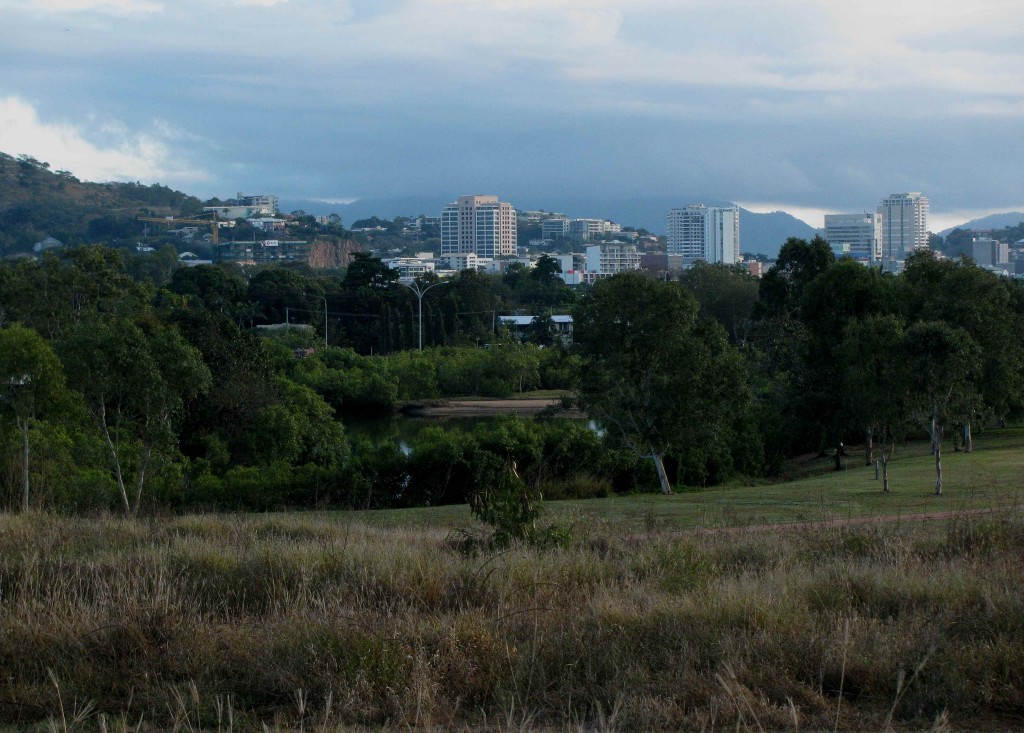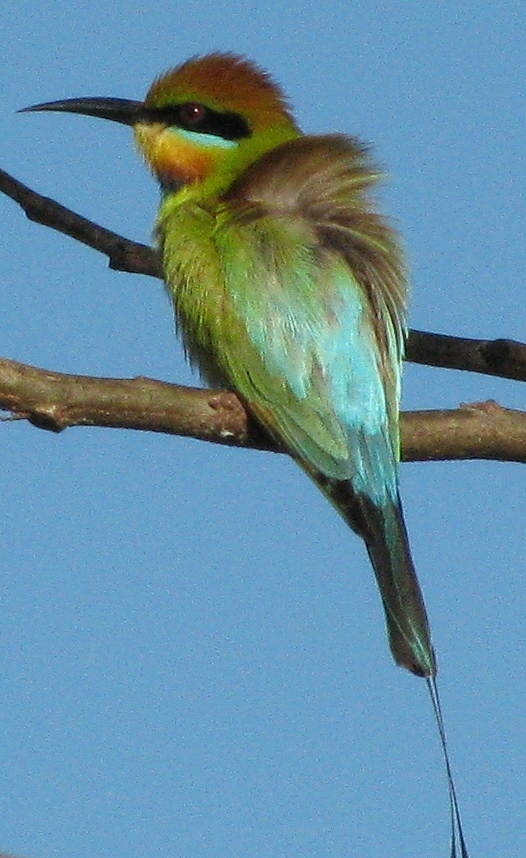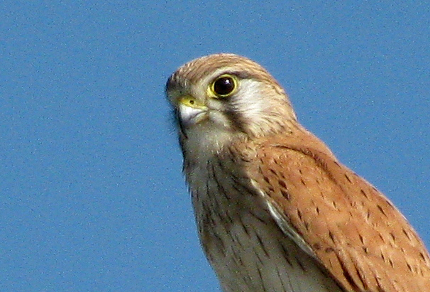In the fresh air past dawn I strode the parkway path into Bicentennial Park, chasing birds and fitness while the sun washed away grey light with its golden, cloud-sieved rays. Figbirds plucked berries from fig trees along the river, and an eastern curlew – the first I’ve seen – fossicked on a gravel bar exposed by low tide, thrusting its long, down-curved bill among the red stones. This species of curlew is the largest of Australia’s migrant waders and breeds in northeast Asia1, returning to the coasts of Australia to fatten up during summer before embarking on a long flight over the Pacific to its breeding grounds in the north. Farther along the river, a little pied cormorant swam sleek and fast, half submerged, its body swirling the water into unrest while an agitated white reef egret peered over its shoulder.

View of Downtown Townsville from Bicentennial Park (© Magi Nams)
Eventually, I abandoned the river to explore the dry hill built of fill that thrusts upward west of the playing fields in the park. From its top, I looked out over the park and across Ross Creek to downtown Townsville snuggling up to the foot of Castle Hill beneath brooding clouds. Small birds with lisping or sweet, airy voices – golden-headed cisticolas, nutmeg mannikins, red-backed fairy-wrens – flitted in stands of tall, dried grasses or herbaceous weeds, a red and black male fairy-wren resembling a glowing coal suspended amid the dry vegetation. A pair of pheasant coucals, which are large, dark brown birds flecked with gold and which possess a swashbuckling sort of tail, managed to look both elegant and scruffy while first clinging to dried weeds and then flying into cover. Whenever I see a coucal clinging to grass stalks or thin weeds, I’m at a loss as to how it supports its pheasant-sized body on such meagre, brittle rods of vegetation.

Rainbow Bee-eater (© Magi Nams)
A trio of black-faced cuckoo-shrikes that were likely a pair and their young (since one bore immature plumage) perched nearby in graceful contrast to the coucals, the adult cuckoo-shrikes handsome and mysterious, their long black face masks contrasting sharply with grey backs and white bellies. Down the slope from the coucals and cuckoo-shrikes, rainbow bee-eaters gleamed like brilliant, multi-hued swatches of satin hung from bare branches. On the gravelly ground, a pair of Richard’s pipits performed courtship behaviours, both fluttering their wings, the female arching her neck to point her beak upwards in supplicating motions while the male flew low, wing-fluttering flights nearby.
When the sun began to lick my bare neck and limbs with building heat, I turned homeward, on impulse strolling through the park’s playing fields. That impulse brought me within five metres of a pair of Nankeen kestrels perched atop the backstop of a ball diamond. The two small, agile raptors eyed me curiously, the female allowing me to photograph her against a brilliant blue sky. Everywhere I had looked this morning, I had found birds – singing, winging, hunting, skulking, or perched motionless, eyeing me with as much interest as I eyed them.

Female Nankeen Kestrel (© Magi Nams)
Today’s birds: peaceful doves, rainbow lorikeets, magpie-larks, mynas, spangled drongos, crested pigeon, white-gaped honeyeaters, brown honeyeaters, figbirds, yellow honeyeaters, masked lapwings, house sparrows, rainbow bee-eaters, white-bellied cuckoo-shrike, blue-faced honeyeaters, *eastern curlew, Australian white ibises, great bowerbirds, red-backed fairy-wrens (f,m), welcome swallows, golden-headed cisticolas, little pied cormorant, reef egret, black kite, pheasant coucals, nutmeg mannikins, black-faced cuckoo-shrikes, brush cuckoo, little black cormorants, Richard’s pipits, bush stone-curlews, collared sparrowhawk, Australian magpies, rock doves, Nankeen kestrels (f,m), leaden flycatcher (f), little corellas, helmeted friarbirds, olive-backed oriole, white-throated honeyeater. (*denotes lifelist sighting)
Reference:
1. Graham Pizzey and Frank Knight. The Field Guide to the Birds of Australia. 1997. Angus & Robertson, Sydney, p. 168.


